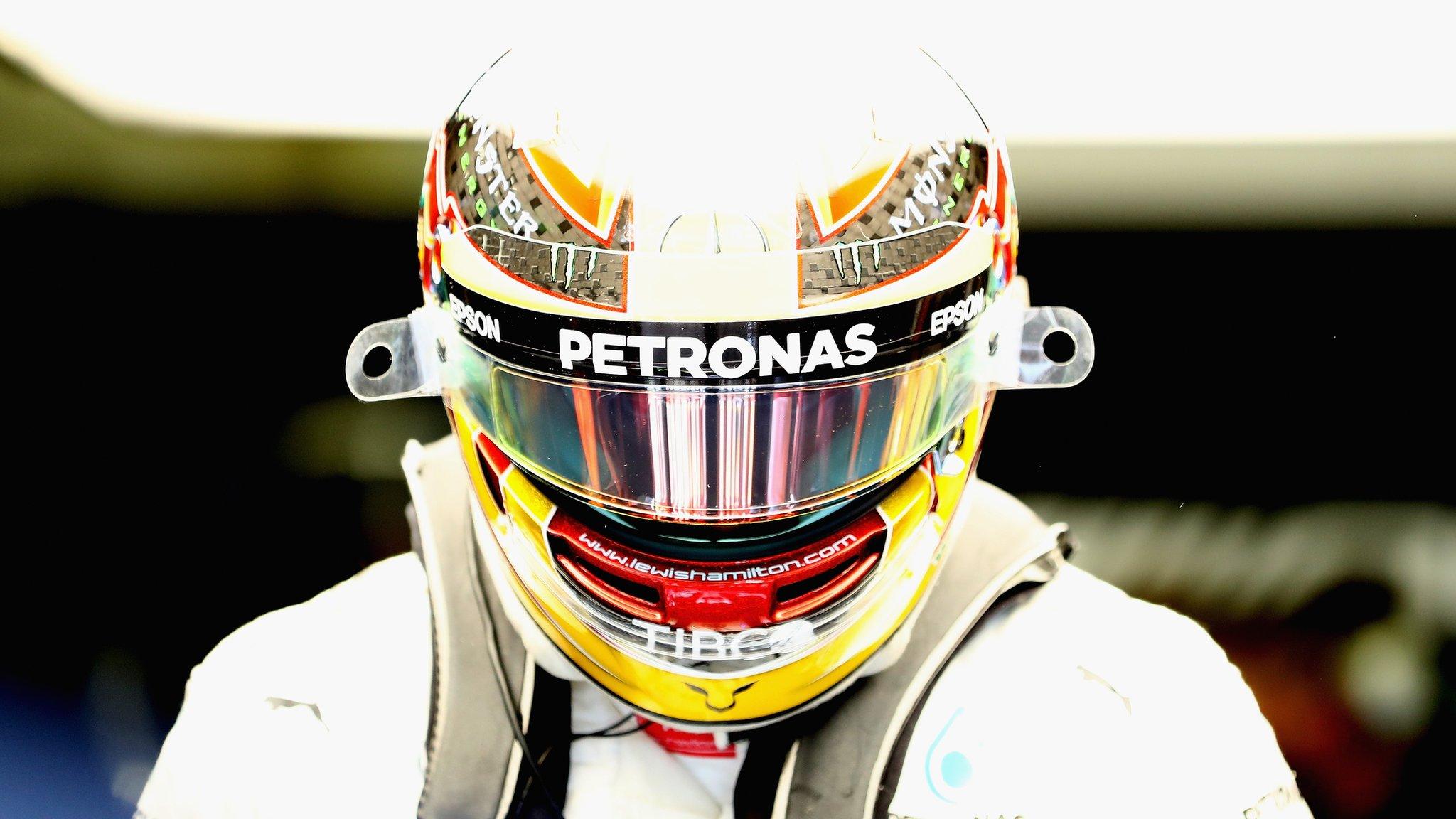British GP: Lewis Hamilton needs to start winning - beginning at Silverstone
- Published
- comments
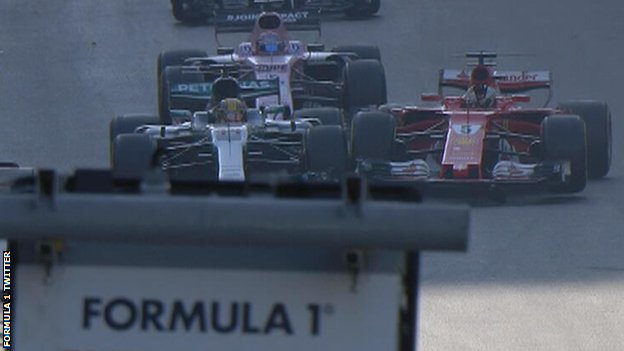
It has been close between Mercedes' Lewis Hamilton and Ferrari's Sebastian Vettel all season - and it got too close in Azerbaijan
British Grand Prix on the BBC |
|---|
Dates: 14-16 July Venue: Silverstone |
Coverage: Practice and qualifying on BBC Radio 5 live sports extra (online only), and race on BBC Radio 5 live. Live text commentary, leaderboard and imagery on BBC Sport website and app. |
Winning the Formula 1 World Championship is not meant to be easy, and Lewis Hamilton's quest for his fourth is proving anything but.
The Mercedes driver trails Ferrari's Sebastian Vettel by 20 points after nine of 20 races this season and admitted himself after finishing fourth in Austria on Sunday that he badly needs to start clawing back some of that margin at the British Grand Prix this weekend.
Hamilton and Vettel have three wins apiece this season, and the Briton five pole positions to Vettel's one, but the German's greater consistency is the difference.
Hamilton has had four difficult weekends in nine - off-form in Russia and Monaco, a win lost to a loose head restraint in Azerbaijan and a five-place grid penalty for an unauthorised gearbox change in Austria.
"Lewis had all the bad luck that you can have," team boss Toto Wolff said on Sunday evening. "Now it is about time to fight back and hopefully that is going to happen at Silverstone."
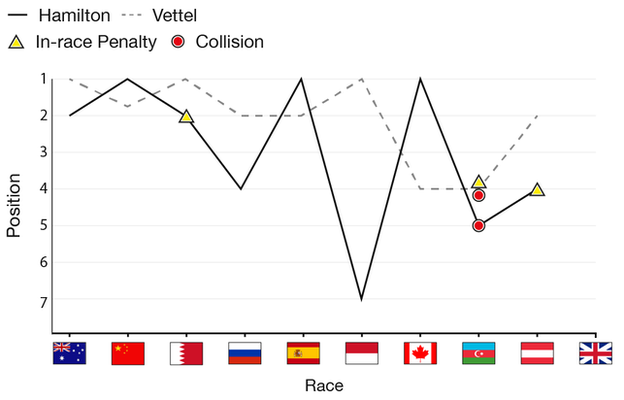
Hamilton and Vettel: the battle so far...
Reading between the lines of Wolff's comments in Austria, the inference was that the team still regard Hamilton as their most likely title winner. But Valtteri Bottas' second win of the season has brought him to within 15 points of his team-mate and raises the prospect of some awkward decisions internally at Mercedes as they fight a team that is very much focused on one man.
Vettel's consistency - he has the equal best average qualifying position with Bottas despite not having the fastest car over one lap - has been helped by the user-friendly character of the Ferrari.
The Italian team have performed wonders to turn around their form after a winless 2016, designing a car to the faster, more muscular new regulations that has been able to take the fight to Mercedes, after three years of almost total domination by the silver cars.
Mercedes have always had an advantage on pure pace, and it has extended in recent races - after the first six grands prix of the season their average qualifying advantage was 0.141secs; now it is 0.268.
But there is nothing to choose between the cars in races and most victories have been decided on small details - a better start, a twist of fate on strategy and the like.
Meanwhile, debate continues to rage about whether Vettel was fortunate not to be punished further when governing body the FIA investigated his road-rage incident in Baku, instead being allowed to walk away with a stern warning after issuing a public apology.
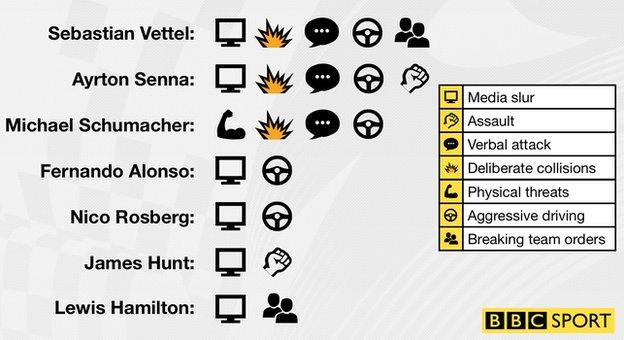
When champions turn bad: who has seen the red mist over the years, and what did they do?
The performance balance at the top
The Ferrari remains an easier car to make work - it seems to be competitive whenever it hits the track, no matter what the situation. Wolff has described the Mercedes as "a diva" - but the team are now better able to extract the best from what was initially a difficult car to handle.
There are two main reasons for this.
Firstly, the world champions struggled to make the car work on the Pirelli tyres in some races early in the season. But an internal inquiry after their struggles in Monaco - where Ferrari finished one-two and Mercedes had their least competitive race - seems to have led them to a place where they can more consistently find the set-up needed to make the car work.
Secondly, a new fuel for last month's Canadian Grand Prix has allowed Mercedes to run the engine in its highest-power modes for longer, extending what was already a small performance advantage over Ferrari.
F1: Ferrari's Sebastian Vettel is on 'incredibly thin ice'
The British Grand Prix should on paper slightly favour Mercedes.
The shorter-wheelbase Ferrari is strongest on circuits with slow, short-duration corners and lots of changes of direction. The Mercedes - which is 16 centimetres longer - is better suited to fast, flowing circuits with long corners. Exactly like Silverstone.
But Vettel said on Sunday that he felt the Ferrari would be quick at Silverstone. And he narrowly lost out to Hamilton for the win at Barcelona, a similar type of track, so another unpredictable and tight battle looks on the cards.
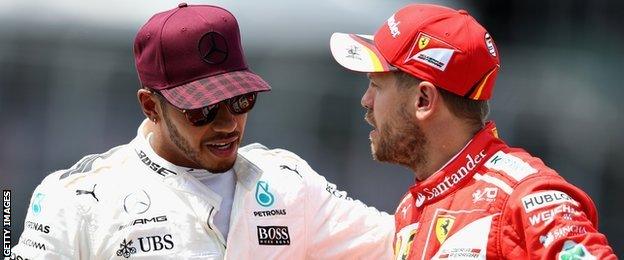
'Remember when we used to get on?' 'Not really...' Lewis Hamilton and Sebastian Vettel's rivalry has intensified this season
Red Bull beginning to surge
While Mercedes and Ferrari continue to host a two-horse race for the title, Red Bull are showing signs of a resurgence after a below-par start to the season.
The RB13 was not born well, being more than a second off the pace for the first four races.
Team boss Christian Horner says it would be "unfair" to relate this directly to design chief Adrian Newey being more focused on his work on the Aston Martin-Red Bull road car over the winter, insisting it was more to do with the bigger size of the 2017 cars upsetting the correlation between the team's wind tunnel data and the car's on-track performance.
Whatever it was, Newey has been more focused on F1 since the pre-season tests, the correlation issues have been resolved and an upgrade package for the Spanish race in early May provided a big step forward.
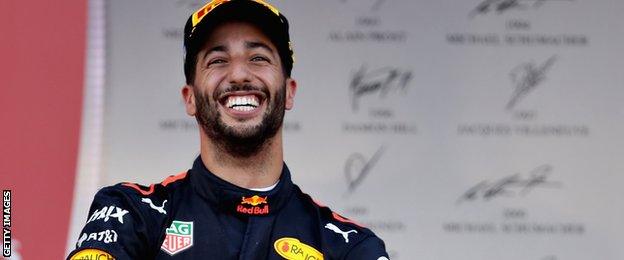
Daniel Ricciardo has had five consecutive podium finishes - thanks to some brave overtaking
Refinements and further developments have followed and engine partner Renault has played its part with mapping and engine mode improvements for the Baku race that it said provided a further 0.2secs in lap time.
The result has been a drop in the team's average qualifying deficit from 1.2secs in the first four races of the season to 0.76secs in the past five. In races they are closer again - as Daniel Ricciardo, who won in Baku thanks to a healthy dose of luck and some typically aggressive overtaking, proved in holding off Hamilton in Austria on Sunday.
They are still clearly not where a team of Red Bull's aggressiveness and ambition wants to be, and by no means all of that deficit is down to the engine. But Red Bull are now in a position where they can spring a surprise every now and again and are hopeful of closing the gap further as the season progresses.
Their chassis will suit Silverstone's fast sweeps - Ricciardo has been waxing rhapsodic about the prospect of taking Copse flat out - but the track is perhaps a bit fast for them to show particularly strongly unless it rains. Red Bull's form at the next race in Hungary on 30 July will be interesting to see, though.
Behind the big three

Force India's Sergio Perez and Esteban Ocon - not best mates either after Baku
There is generally a big gap between the top three and the rest.
The statistics say the Williams is narrowly the fourth fastest car from the Force India, but collectively the Williams team and drivers have not converted that performance into results this season, while Force India have done brilliantly and already look locked on for another fourth place in the championship.
Force India are well known as the team with the best bang for buck on the grid, and they have produced another effective car. But a lot of the credit for their performance also goes to their driver line-up of Sergio Perez and Esteban Ocon.
Perez has developed into a very consistent points scorer and Ocon, a 20-year-old Frenchman rated as one of the best hopes for the future, is putting pressure on the Mexican.
That pressure boiled over in Canada and Azerbaijan, where Perez and Ocon found themselves battling for position on track. In Baku, this ended in an intra-team collision and possibly a lost double podium finish.
The driver situation could cause Force India some problems if they cannot get on top of it, but apart from that 2017 is going swimmingly for them, despite their owner Vijay Mallya's legal problems.
At Williams, lots of points went begging in the early races of the season, thanks to a couple of shaky races, some bad luck, and a slow start by rookie Lance Stroll.
The 18-year-old Canadian looked out of his depth for the first six races but two points for ninth place after a steady race at home seemed to boost his confidence and in Baku he was pretty much a match for team-mate Felipe Massa. But Williams have a lot of ground to make up.
Renault and Toro Rosso are also in this mix in terms of performance, with the up-and-down Haas team occasionally popping up as well.
What about Alonso and McLaren?

"Wait a minute. Your engine is working?!?!" Fernando Alonso with team-mate Stoffel Vandoorne
Towards the back, three of F1's biggest names remain mired in a fog of poor performance and recriminations, as Honda's return to the sport continues to underwhelm and McLaren and Fernando Alonso suffer as a result.
The McLaren is a good car - how else can one explain Alonso qualifying seventh in Spain, one of the tracks so far where the engine is least important in the overall picture and where good aerodynamics are rewarded?
But Honda's engine is nearly 90bhp down on the Mercedes, and that's the sort of deficit for which no amount of car performance or driver talent can make up.
The stats say the McLaren-Honda is the second slowest car in F1, ahead only of struggling Sauber, so Alonso's average qualifying position of 12.9 says a lot for his enduring qualities, as do some of the race performances he has dragged out of the car this year before its almost-guaranteed failure.
It is highly likely Alonso will take the latest in a long line of engine-related grid penalties and start from the back at Silverstone, a track that exposes the deficiencies of Honda's hybrid recovery and deployment because of the minimal amount of braking around the lap. So it could be another dispiriting weekend. Hungary, where the car should be a dead cert for a top 10 place on the grid, might provide some relief a fortnight later.
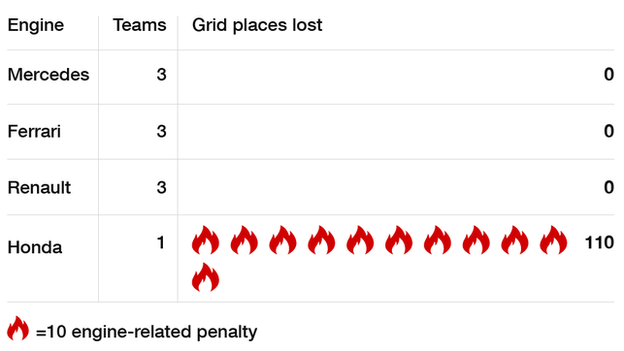
Grid places lost per engine supplier through engine-related penalties so far in 2017
But that will not change the general disposition at McLaren, where patience with Honda has run out and where - quietly, behind the scenes - moves are afoot to force a separation, and a switch to Mercedes customer engines for 2018.
No one is saying much publicly, but the mood music is that the pieces are all being put in place for that to happen before the end of the summer.
It might be a questionable move long-term - it is hard to win regularly with a customer engine when the company supplying it has their own team - but there is no denying the short-term logic. It might even persuade Alonso to stay. And as long as McLaren can produce another good car, Alonso in a McLaren-Mercedes could cause some trouble for the front-runners in 2018.
The Spaniard's rookie team-mate Stoffel Vandoorne, meanwhile, was highly touted but has been a disappointment so far, struggling to get near the Spaniard, although there have been hints of progress in recent races. The Belgian needs to up his game or his future at McLaren might become significantly less secure than he believes or the team are saying.
Only Sauber are doing worse than McLaren, even if they rank above them in the constructors' championship after Pascal Wehrlein's excellent eighth place in Spain.
They are short of cash and using year-old Ferrari engines, although they will have a team principal from Monday when former Renault boss Frederic Vasseur takes over, three weeks after the departure of long-time servant Monisha Kaltenborn.
All that, and Honda engines to look forward to in 2018. These are not happy days at Sauber.
- Published14 July 2017
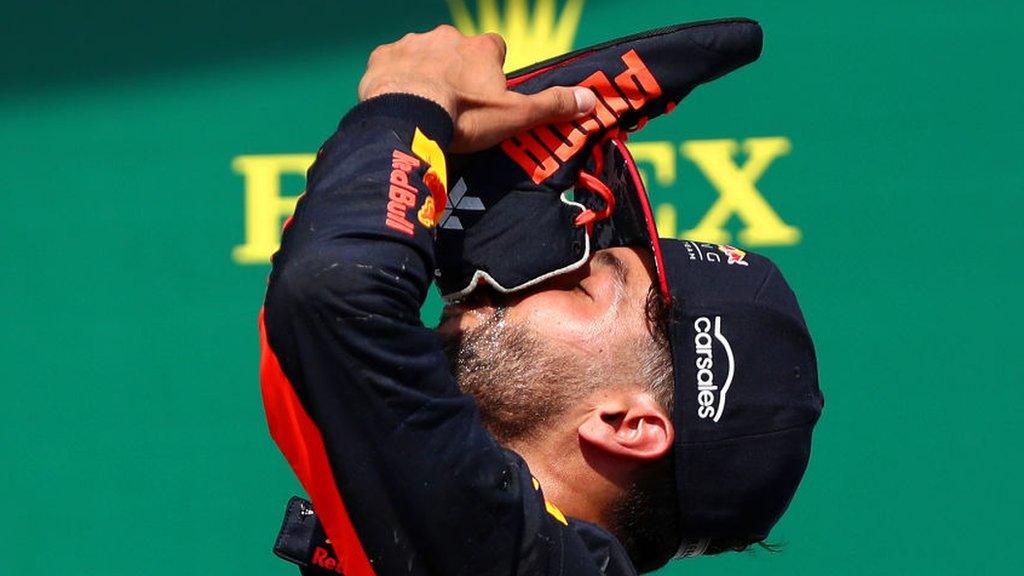
- Published11 July 2017
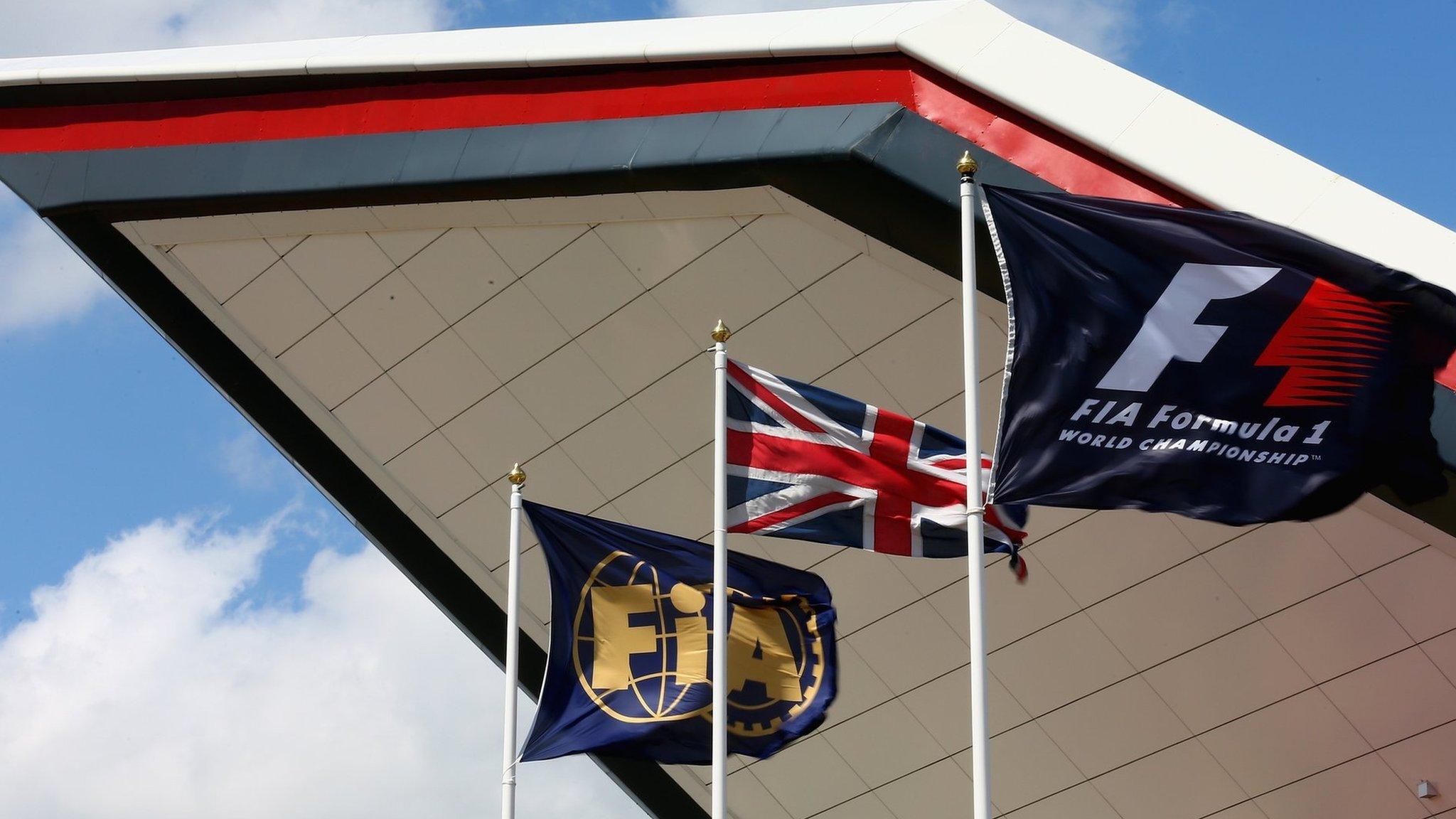
- Published9 July 2017
- Published9 July 2017
